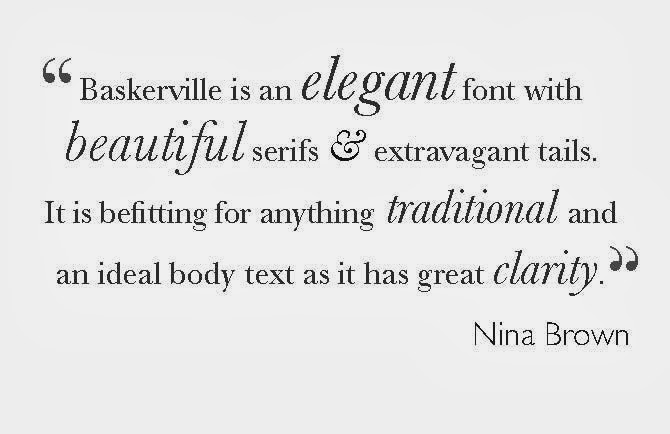
With his wealth from engraving he had the means to explore and experiment with type. His business brought him great wealth because of his great talent and hard work. He decided to move to Birmingham around 1740 where he became a writing teacher, and went on to make his fortune by starting a varnishing business. Baskerville is one of the first noted designers and set a pathway with his work done with the printing press. He was very talented and created very beautifully carved tombstones. At the age of seventeen John Baskerville started his career and became a tombstone engraver, this is the first (documented) time that Baskerville entered the print design and type design world. Baskerville was also a committed atheist and often went against religion. Outside of being an artist, Baskerville was recognized for living with a woman unwed, which was a huge scandal during the time period, they ignored the comments and shared this radical companionship. John Baskerville was born at Sion Hill farm in Worcestershire, England in 1706 and died in 1775. His name may be recognized from the typeface named after himself, Baskerville, a serif type with thin and thick contrast, great legibility, and often used in books or novels. Idsgn (a design blog).John Baskerville is notable in graphic design for his work with type design and print design. Baskerville has been around for a while and does not look like it is going anywhere anytime soon.īaskerville, J.
#Baskerville typeface test professional#
Overall, this font seems to work all around due to it being used in multiple professional and casual scenarios. They are useful to put a different spin and perspective on the font being used. These principles basically alter the visual representation of every single font. Some of these principles include font weight, color and direction. It fits the style for professional documents and spec sheets, but also can be used in a fun magazine by adjusting the major principles. This font appeals to me because you can use it an almost any situation. The tightness of lettering is a common pattern that I see when typing in Baskerville. When saying this, I am talking about the default version of the font Baskerville.

Also, something else that I noticed about this font is how the lettering is close together. The thickness of the lettering flows equally throughout every letter as you would see in any typical typeface. For example, the “a” in Baskerville has a rounded bowl on the left side of the letter. Baskerville also seems to be rounded smoothly which gives it more of a casual or relaxed vibe. This eliminates most of the empty space between the lettering due to the type being tightly packed. Another thing that I noticed is that the spacing between each of the letters is tight and close together. For example, the “B” in Baskerville has a wide thickness and seems very dense. The lettering is bulkier than other typefaces which makes it stand out more. One obvious different characteristic is the thickness of the lettering. Baskerville is similar to many fonts out there, but it does have a couple distinguishing characteristics that separates the font from the rest. Some other professional pieces that you could use the font Baskerville with are: promotional signs, advertisements and flyers.Įven though this font is very professional, when looking at it, I would describe it as a professional font with a fun spin on it.

Some characters are widened and made more round and there is more of a contrast between the thick and thin strokes.

According to, it is used “to add length and importance to a manuscript.” Basically, it helps to use the font because of the amount of space it takes up. Examples of this are spec sheets, news articles, magazines and websites. Baskerville worked on print technology and he worked to create a black ink color from boiling linseed oil ( ).įurthermore, this font seems to be used for many professional pieces. John Baskerville was a servant for a clergy who recognized his penmanship talents and helped support him to learn writing. The Baskerville font was designed in 1754 in Birmingham, England. This font seems basic, but when adjusting the weight, it seems to be more eye-catching to the viewer. The classification that the typeface, Baskerville, resides in is serif or more specifically transitional serif. This is because it seems like a typical font you would find in a news article. When first looking at the font, the first word that comes to my mind is simplistic.

One typeface that stood out to me is Baskerville due to the creative value that it offers.


 0 kommentar(er)
0 kommentar(er)
